Cold Weather Operation
"Tub Talk - with Dan Jung ? Owner www.cedartubs.com / Hot tub enthusiast"
COLD WEATHER
Customers often ask the question: I live in a cold climate and what measures can I take to reduce the heating bills, especially in the winter?
The main measures involve insulation and avoiding injection of cold air. As far as insulation is concerned, the tub has four surfaces (top, floor, staves and piping) that you can fully or partially insulate. Every additional sq inch that you insulate will save you some money. Here is how.
1) The top surface is covered with a thick cover that has a thermal rating of R14. This is a good thermal insulation rating for covers. You can upgrade to our deluxe arctic cover, which is 50% more efficient and has a R21 rating. You can’t do more than this.
2) The floor surface can be permanently insulated with 1.5” or 2” blue high density Styrofoam. This is an option you can purchase from Northern Lights Cedar Tubs, as shown below. Or, if you wish, you can do this yourself, before you assemble the tub.
Figure 1 - Insulated Floor
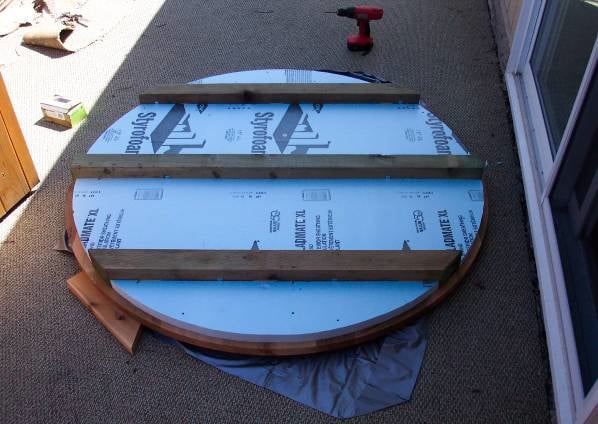
3) Insulating the wall (stave) surfaces, which makes up the largest portion of the remaining heat loss, is highly recommended, if the tub is built into a deck. The portion underneath the deck can be insulated most easily using reflecting foil bubble wrap.
Figure 2 Roll of Foil Bubble Wrap
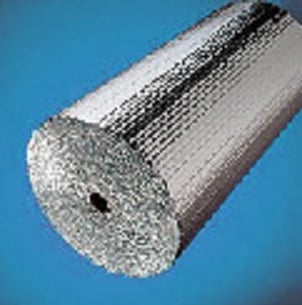
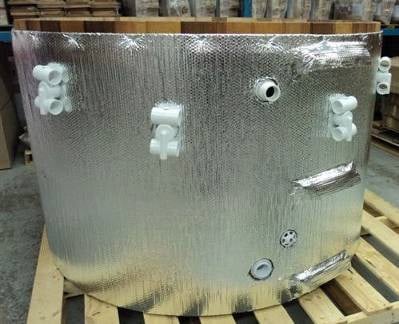
Begin by unrolling the wrap and, then using a long straight edge and a utility knife, cut to length and height needed. Two wraps will require a length, L= 2 x π (d+.25), where d = outside diameter expressed in inches. Then roll the wrap back up and staple (with stainless steel or galvanized sheeting staples) the horizontal starting end along the middle of a stave and start wrapping it around the tub. Staple the top edge every 2nd stave. Cut out around the band tighteners with a utility knife.
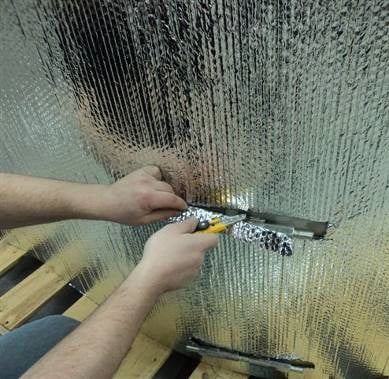
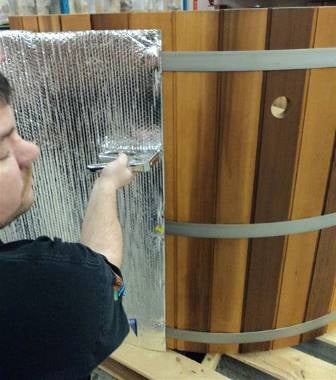
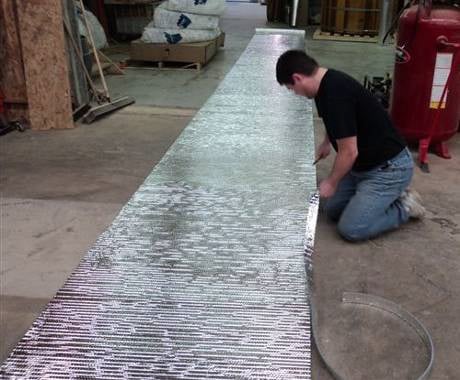
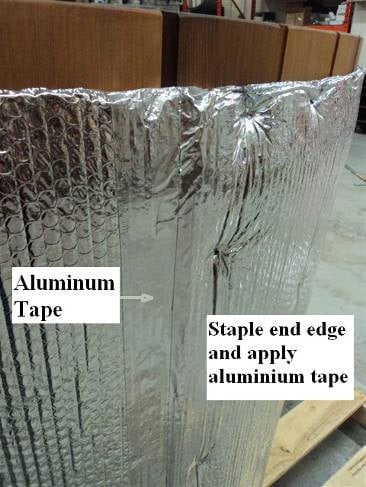
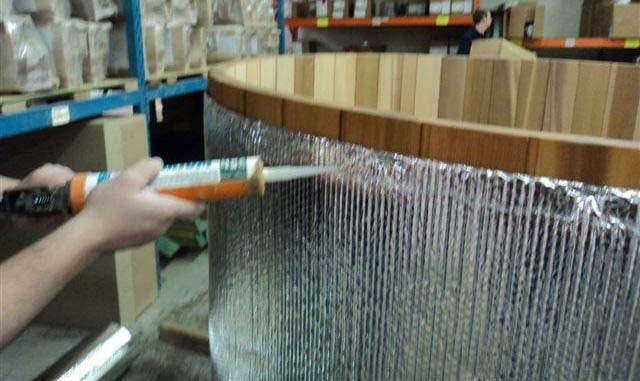
Once one layer has been achieved, apply a bead if silicon about 2 inches down. Continue wrapping the 2nd layer. Staple and tape the end edge.
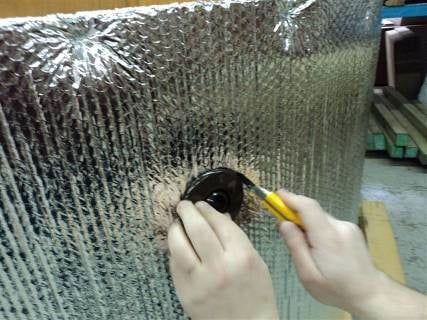
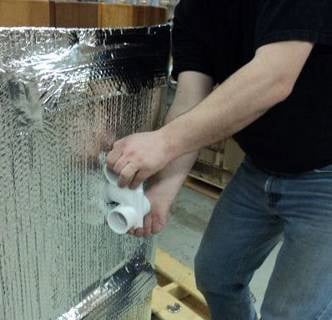
Apply silicon caulking at the top, to stop chimney effect and prevent water from running down the inside. Locate the center of each hole, cut it out and then further using the wall fitting itself as a guide, cut out around the hole. Then install the wall fittings. Cover the bad tigtheners using wrap material and aluminum tape, as shown above.
4) The plumbing hosing and piping is another big heat loss area. Purchase suitable diameter foam pipe insulation from a Plumbing & Heating Supply Retailer or Wholesaler. You can also use the same reflective bubble wrap insulation. The bubble wrap works best for the piping and wall fittings at the tub. Surround all pipes and fittings. Also insulate the filter by wrapping it with bubble wrap insulation. Do not insulate the pump motor or the spa pack.
Figure 3 - Foam Pipe Insulation Surrounding 1-1/2" Hose
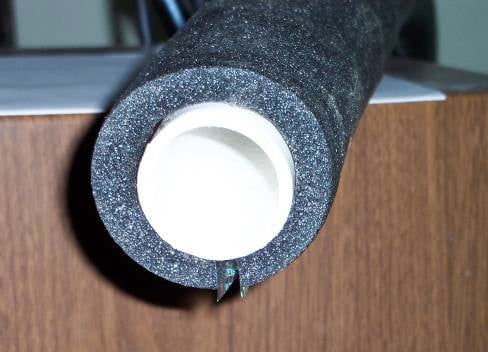
5) Other considerations.
If you have a blower and will operate the tub in the winter, you should trace heat around the pipe coming from the wall fitting to the anti-siphon loop. Unplug the blower, electrically, in the winter, since you don’t want cold air blowing into the water, which will quickly lower its temperature.
Tape foil bubble wrap insulation around the jets and its flex hoses, which join the jets, in such a manner that the top air hose will get heated by the lower water hose by convection. Otherwise the air hose may freeze because water is stagnant in this hose. It is recommended that you do not open the jet air valves in the winter, if you want to reduce your energy bill.
We optionally supply a valve for the ozonator. While this valve should never be closed when the ozonator is plugged in, throttling the flow down will reduce the amount of cold air injected via the ozonator. If you are concerned about heat loss, then in winter use Oxy-Pur (MPS) instead of the ozonator. This doesn’t involve injecting cold air.
If possibly enclose the entire spa pack to hot tub pluming space with additional exterior insulation. But during the summer period this space needs to be provided with ventilation.
If you have any questions regarding the maintenance of your tub or have any experiences you would like to share, please call or email me any time.
Happy Tubbing!
Dan Jung
President








